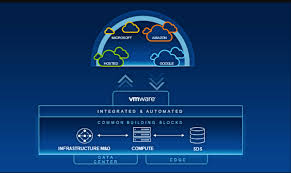Tech
10/25G Modules: The Backbone of Hybrid Cloud and Edge Computing

Hybrid cloud and edge computing are no longer optional—they are critical for enterprises managing massive datasets, real-time analytics, and AI-driven applications. At the network’s core, 10/25G optical modules act as flexible, high-speed enablers. Unlike single-rate modules, dual-speed 10/25G transceivers allow network devices to adapt dynamically, providing both 10Gbps and 25Gbps throughput on the same port. This capability reduces the need for multiple inventory SKUs and simplifies future upgrades.
Flexibility Across Hybrid Networks
In hybrid cloud environments, traffic often flows between private data centers, public cloud instances, and remote edge nodes. Consider a retail enterprise collecting real-time sales data from hundreds of edge stores: 10/25G modules enable a store’s edge switch to operate at 10G when connecting to local devices, but scale up to 25G when sending aggregated data to the central data center. This dual-speed functionality ensures high performance while avoiding unnecessary infrastructure replacement, saving both time and capital expenditure.
Low Latency for Edge Applications
Edge computing applications demand low latency for real-time responsiveness. For instance, in autonomous vehicle testing or factory automation, even milliseconds of delay can impact performance. 10/25G modules provide low insertion loss and high signal integrity over distances up to 100 meters with direct-attach copper or up to 10 kilometers using single-mode fiber. These modules maintain consistent throughput for time-sensitive workloads like AI inference or video surveillance, ensuring edge devices communicate efficiently with centralized or cloud nodes.
Scalability and Future-Proofing
A major advantage of 10/25G modules is their ability to support network scaling without major overhauls. For example, an enterprise data center initially operating at 10G can incrementally migrate uplinks to 25G as traffic grows. QSFP28 or SFP28 ports paired with dual-rate modules allow this transition without replacing existing cabling, reducing downtime and operational complexity. This modular approach extends the network’s life cycle and allows IT teams to respond quickly to seasonal spikes or business expansion.
Strategic Value for Enterprises
From a business perspective, 10/25G modules demonstrate a commitment to robust, future-ready infrastructure. They reduce the total cost of ownership by minimizing hardware redundancy and supporting seamless upgrades. Companies promoting hybrid cloud and edge adoption can leverage dual-rate modules to highlight technical foresight, reliability, and readiness for next-generation workloads, from AI analytics to IoT device aggregation.
Conclusion
10/25G modules are more than just optical transceivers—they are a strategic backbone for hybrid cloud and edge computing. Their dual-speed operation, low-latency performance, and scalable design allow enterprises to meet growing data demands efficiently while future-proofing infrastructure. By integrating these modules, organizations gain both technical and strategic advantages, ensuring high-speed connectivity, operational efficiency, and readiness for emerging applications.
-

 Celebrity8 months ago
Celebrity8 months agoWho Is Elizabeth Buckley Harrold O’Donnell? A Closer Look at Lawrence O’Donnell’s Family
-

 Celebrity8 months ago
Celebrity8 months agoNathaniel Mandrell Dudney: Insights into Barbara Mandrell’s Family Life
-

 Celebrity8 months ago
Celebrity8 months agoWho Is Vera Davich? A Deep Dive into Her Life and Relationship with Scott Patterson
-

 Celebrity8 months ago
Celebrity8 months agoTalia Elizabeth Jones: Exploring Her Connection to Davy Jones
















